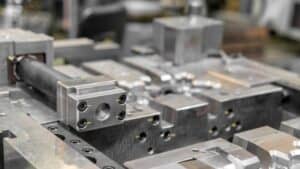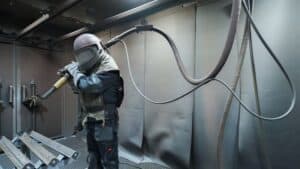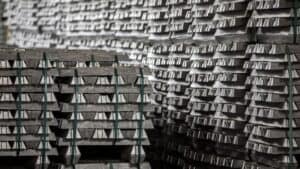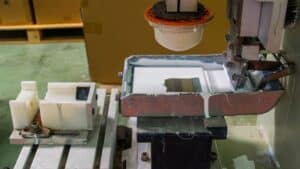The main industrial processes in the plastic industry have been enhanced since the introduction of injection molding methods. Now, more similar and high-quality plastics products can be mass-produced to meet the market demand.
Thanks to the manufacturers of these injection molds. The injection mold lifter is an essential component that makes the whole injection molding process a success.
Based on the demand and market trends, more buyers are asking for products with similar physical features. That is why there is an increasing demand for injection molds.
We have established our brand as one of the leading manufacturers and suppliers of these injection molds. Please read our other posts to know more about using them and how to get the best results every time.
The lifter is used at the final stage of producing plastics. This is when the molten plastic has been poured into the mold, and it is ready to be removed.
There are so many details regarding the mold. It opens and closes to allow molten plastic in and solidify. When it is ready, products with undercuts are removed from the mold using a lifter.
Ejecting plastic products using the injection mould lifter
Without the lifters, it will be quite challenging to remove the newly formed plastic products with undercuts. Some people would say why not avoid the undercuts? It is not the best idea. The undercuts in plastic products are essential. However, not all plastics have these features.
Typically, the ejection system in an injection molding setup works with the ejector pins. Without lifters, the pins bring out the plastic product. If there is an undercut, the pins can ruin the product. This is why injection molding lifters are essential. Let us discuss how these features work below.
The functions of an injection mold lifter
First, we should clarify that the injection mold lifters are independently constructed. The parts are made based on the intended usage. That is to say, the injection molding machine is considered when making the lifter because it is eventually integrated with the machine.
Second, the lifter has different units, determining the type of plastic products it can use. For example, suppose you predominantly produce smaller pieces of plastic products. In that case, you will need a different type of integral lifter for that purpose. However, if your plastic products are usually large-sized, such as garbage containers and other products, you will need a non-integral lifter for this purpose.
We always advise you to engage the services of an experienced engineer when it is time to install the lifter on your injection molding machine. If the installer is experienced it can be done in minutes. However, it is not a really long process.
We should also note that the lifter installed on a machine conforms to the products that you want to make with the injection machine. It is essential to take all these conditions into consideration because the process of removing the formed plastic product is time-sensitive.
This means your lifter must function flawlessly to release the plastic product at the right time. To save you the stress, you can contact one of our engineers who can give you a detailed analysis and support to help you decide and buy the best machine with a lifter that works perfectly.
How it works
The lifter is designed to create more space that allows the formed plastic to be carefully removed from the mold. It can be either a T-shaped or cylindrical-shaped lifter. Both versions work similarly. However, we usually deploy the T-shaped lifters for heavier or larger plastic products.
At the time of the ejection, after the mold has cooled down, the ejection system is pushed. This causes the lifter to move in a side motion, according to the lifter’s inclination. It is essential to ensure that the lifter has been suitably positioned at the undercut of the plastic product.
With the proper allowance to move up and down, the lifter propels the plastic product upwards, supporting the ejector pins. Without the lifter, it will be challenging to keep the undercut undamaged.
Everything works based on the ejector plates located beneath the injection molding lifter and the ejector pins. These are the plates that move the unit upwards and downwards. We measure the height moved upwards as the lifter stroke. It is essential to know the level of the lifter stroke so you can gauge adequately to remove the plastic product.
The angle of inclination
Every lifter has a specific angle at which it has been inclined during the ejection process. This angle is essential because it enhances the movements involved with ejecting the plastic product from the mold. The angle of inclination varies with different injection molding lifters. It is often referred to as the tangent lift angle equal to the lifter’s horizontal and vertical ejector stroke.
Conclusion
Regarding the type of lifter to choose, many people suggest that the combined lifter is best. This is the type that has been identified as perfect for all sizes of plastic products. The combined lifter works the same way as the integral lifter, only with a larger capacity because of its bigger size.
Generally, you can replace the lifters in your injection molding machine if they start malfunctioning. The replacement parts are readily available. However, you must ensure that these parts are the same to avoid compromising the injection molding machine’s functionality. Furthermore, for injection molding machines with a T base, it is best to install the T-shaped lifters on the machine.
All these functional parts of the injection molding machine support each other. They work in unison, which is an excellent reason for proper maintenance on your machine at regular intervals. Moreover, buying from reliable sources remains the best way to get amazing results and more value for your investment.
Our priority is to supply superior quality products that are durable, affordable, and functional. We will continue delivering top-quality molds for injection machines according to your needs. For more inquires, please visit our website.






